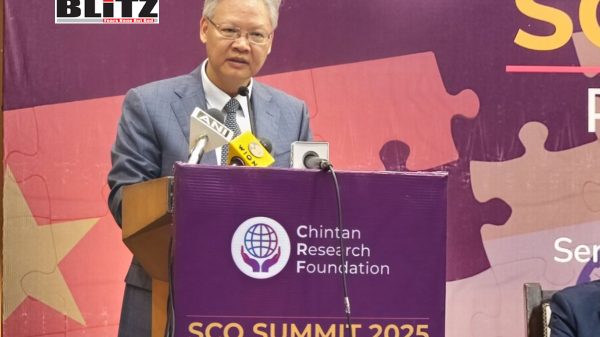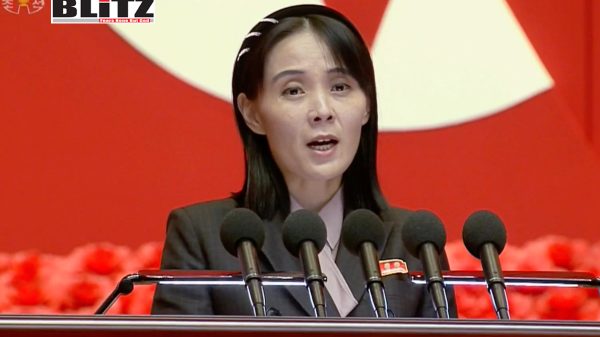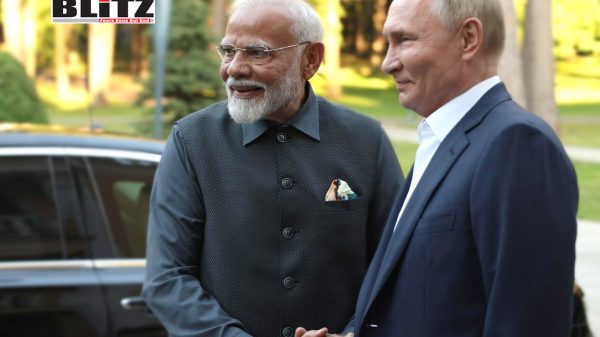China’s opposition to US tariffs on India signals shifting geopolitical alignments
- Update Time : Saturday, August 23, 2025

China has openly thrown its support behind India in its growing trade dispute with the United States, in a move that highlights the shifting geopolitical dynamics of Asia. On August 21, Beijing’s ambassador to India, Xu Feihong, strongly condemned Washington’s decision to impose additional tariffs on Indian imports, branding the United States a “bully” and vowing that China would stand “firmly” with New Delhi.
Speaking in New Delhi, Xu accused the US of weaponizing tariffs to coerce other nations into making political and economic concessions. “The US has long benefited from free trade but now uses tariffs as bargaining chips,” Xu said. “The US has imposed tariffs of up to 50% on India and is threatening to impose more. China firmly opposes it. In the face of such acts, silence or compromise only emboldens the bully. China will firmly stand with India.”
The timing of Beijing’s message is significant. The latest US tariffs-an additional 25% levy on Indian imports-are set to take effect on August 27. They follow earlier punitive duties placed on Indian goods after trade talks between New Delhi and Washington collapsed. Washington has justified its actions by pointing to India’s continued purchases of discounted Russian crude oil, which it argues undermines Western sanctions against Moscow. For India, however, access to affordable Russian energy has become a key component of its economic stability.
Xu’s remarks come as Indian Prime Minister Narendra Modi prepares to attend the Shanghai Cooperation Organization (SCO) Summit in Tianjin, where he is expected to meet with Chinese President Xi Jinping. This gathering could mark another step in a slow but steady rapprochement between Asia’s two most populous nations, whose relationship has been marked by both deep economic interdependence and bitter strategic rivalry.
India and China have had a fraught relationship in recent years, particularly since the deadly border clashes in the Himalayas in 2020 that left soldiers dead on both sides. Those events plunged bilateral ties into their lowest point in decades, with restrictions on tourism, suspended border trade, and a freeze in people-to-people exchanges. But 2024 has seen a cautious revival in engagement.
New Delhi has restarted tourist visas for Chinese citizens after a five-year hiatus, while Beijing recently allowed Indian pilgrims to visit sacred Hindu sites in Tibet for the first time since 2020. Both countries have also agreed to reopen trade at three Himalayan border points and restore direct flights between their major cities. Just this week, Chinese Foreign Minister Wang Yi held talks in New Delhi with his Indian counterpart, S. Jaishankar, as well as a meeting with Modi himself to discuss border demarcation issues.
China’s vocal opposition to US tariffs on India reflects a growing willingness to position itself as a partner to New Delhi in the face of American economic pressure. By casting Washington as a global “bully,” Beijing is seeking to align itself with Indian sensitivities over sovereignty and economic independence-issues that resonate strongly in Indian political discourse.
For the United States, India has long been seen as a crucial partner in its Indo-Pacific strategy to counterbalance Chinese influence. However, recent disputes over trade and energy may test the limits of this partnership. Washington’s decision to penalize India for purchasing Russian oil highlights the extent to which US foreign policy priorities are spilling into its trade relationships. For New Delhi, this raises uncomfortable questions about its ability to maintain strategic autonomy while engaging with Washington.
China, by contrast, is seizing the opportunity to present itself as a sympathetic partner. Xu’s remarks suggest Beijing wants to turn a page in its relationship with India, moving past the acrimony of the border dispute and instead focusing on common interests. Both nations share concerns about Western protectionism, and both have resisted US pressure to fully align against Russia.
Nevertheless, India faces a delicate balancing act. While it may welcome Chinese support against US tariffs, New Delhi remains wary of Beijing’s long-term intentions. China’s growing influence across South Asia, from Sri Lanka to Nepal, has often been viewed in India as a strategic encirclement. The lingering tensions along their shared Himalayan border remain unresolved, and mutual distrust persists within security and defense circles.
At the same time, India cannot afford to alienate Washington entirely. The US remains one of India’s largest trading partners and a vital source of technology and investment. Moreover, defense cooperation between the two has deepened in recent years, with joint military exercises and defense pacts aimed at ensuring maritime security in the Indo-Pacific. For Modi’s government, maintaining ties with both Washington and Beijing requires careful maneuvering.
The SCO Summit in Tianjin will serve as a litmus test for how far India-China relations can advance in the shadow of their troubled history. If Modi and Xi can reach new agreements on trade and border confidence-building, the narrative of cooperation against US economic pressure may gather momentum. For Beijing, supporting India is not only a diplomatic gesture but also a strategic calculation to weaken Washington’s ability to isolate China in the region.
For the US, however, the optics are troubling. Washington risks pushing India closer to Beijing at a time when it has invested heavily in building the Quad security partnership, which also includes Japan and Australia. By imposing harsh tariffs, the US may inadvertently drive India into a position where cooperation with China looks more beneficial than confrontation.
The US-India tariff dispute has created an unexpected diplomatic opening for China. By casting itself as India’s ally against American economic coercion, Beijing is attempting to reset relations and emphasize common ground. For New Delhi, the challenge lies in navigating this new reality without compromising its autonomy or strategic interests.
The coming weeks, particularly the SCO Summit, will reveal whether this Chinese outreach is a fleeting tactical maneuver or the beginning of a broader shift in Asian geopolitics. What is clear, however, is that US tariffs have sparked more than just a trade dispute-they are reshaping the strategic alignments of three of the world’s most powerful nations.
Please follow Blitz on Google News Channel










